Drawing Your World Into Existence
My past is sketchy. I wouldn't have it any other way. WRITTEN & ILLUSTRATED by PETER MOORE
WHEN MY WORK-LIFE BECOMES CROWDED WITH DEADLINES—pace, assigning editors! I’m writing/drawing/amusing as fast as I can!—I’ll dip back into my archives, currently hidden behind the Substack paywall.
And you know how to get past that.
That’s why I launched ReWindsday: To pull out some foundational pieces in this 370-post string of whimsy and life analysis, and present them to my new readers. 171 of you read this the first time, so you can have the day off. But for the 4,000 readers on average now, you’ve got work to do: Learn one very simple way you can enrich every moment of your life. Quite a promise, eh?
Read on.
ONE OF THE FUN THINGS about diving into the world of Substack is running into other Substackers, each with their own take on the world and a newsletter to express it. How else would I have met
? He’s a trained engineer who was halfway through his PhD in biomechanics when he fell under the influence of artists, and made the questionable and wonderful decision to become and artist and writer full time. He’s in all the usual places online, and also at sneakyart.substack.com.His gig is to go into public spaces with pen in hand, and fill his notebooks with sneaky sketches of what and who he observes. This stolen excerpt from his ‘stack shows his approach: Go to an interesting public place, stare at it, and then make it his own by rendering all the angles and people into his drawing.
I have no idea how or if he makes a living at this, and that’s not the point, really. It’s more a question of how Nishant chooses to engage with the world. Answer: By looking at it very, very closely.
Elsewhere in my newsletter, I’ve posted one of my favorite quotes from Virginia Woolf, in her kaleidoscopic birth-to-death novel The Waves: “Outside the undifferentiated forces roar,” Woolf wrote, “inside we are very private, very explicit, have a sense indeed, that it is here, in this little room, that we make whatever day of the week it may be. Friday or Saturday. A shell forms upon the soft soul, nacreous, shiny, upon which sensations tap their beaks in vain.”
Tap, tap, tapping on that shell, and breaking it down ever so slowly, is what drawing is all about. It forces you to really pay attention to the world, to filter it through your sensibilities, and lay it out on the page as only you can.
Like Nishant, I have been lurking in private spaces and rendering the world I find there. Only, I’m peering into my distant past, as recorded in a daily journal I’ve been keeping since October 12, 1978.
Among my discoveries:
This French matron, who barred my entrance to a Paris courtyard I wanted to visit.
A grieving woman, herself now long dead, whom I encountered in the shadows of Sacre Coeur on October 16th, 1978.
In my journal that day, I wrote: “I nearly stumbled into a worshipper, because her stout frame was wrapped in a black cloak, and her gray hair was drawn tightly beneath her matching kerchief. She sidestepped my headlong rush, and receded among the shadows of the stone cathedral; to me, she became a shadow of the mourning rituals of Christianity. I encountered her a second time in my slow walk through the darkness, watching her choose a devotional candle, after which she paused to look at the supplicating statue of Mary, whose marble surface had the radiance of living flesh in the yellow candlelight. The mourner impaled her candle stub on a spike, then slowly moved away, exiting below the illuminated clock face that hovered forty feet above the floor—a gleaming reminder of time’s passage for the prayerful, dying animals in the cathedral.”
Now she lives on for me, in a new way.
While I’m experimenting with immortality, why not claim a bit of it for myself? I inserted myself into two of my favorite Monet Paintings: Woman [plus me, replacing her son in the original] with a Parasol Facing Right…
And of course: Woman with a Parasol [and me, napping] Facing Right.
In the Sneaky Art Substack linked above, Nishant stakes a claim for all artists of all stripes (and colors and contours): “The practice of making art is beneficial to all,” he writes, “regardless of skill level. But for various reasons - some personal, others societal - we have convinced ourselves that it is the privilege of the talented, the prerogative of elites, or the domain of professionals. Consider that we do not make art because we are good at making art. We make art because it is good for us.”
I asked Nishant how he summons the courage to work without a net—no access to an eraser to obliterate faulty lines. “I decided to switch to pen and ink before I was any good at it,” he told me. “Having an eraser on me meant I was finishing fewer pieces. But this way I only go forward, turning the page, incorporating my mistakes.”
Sounds like a life philosophy, as well as a drawing discipline.
Have you got a past to recreate? Looking for an excuse to occupy that table at the coffee house for a few hours? Bring pad and pencil, and sketch it into existence. There’s no better way to capture a moment, and moments are all that we have. You can do it with a journal in hand, or your guitar. The important thing is to capture the moments, because nobody can make new ones but you.
That woman in Sacre Coeur may be long gone, but for me she lives on.
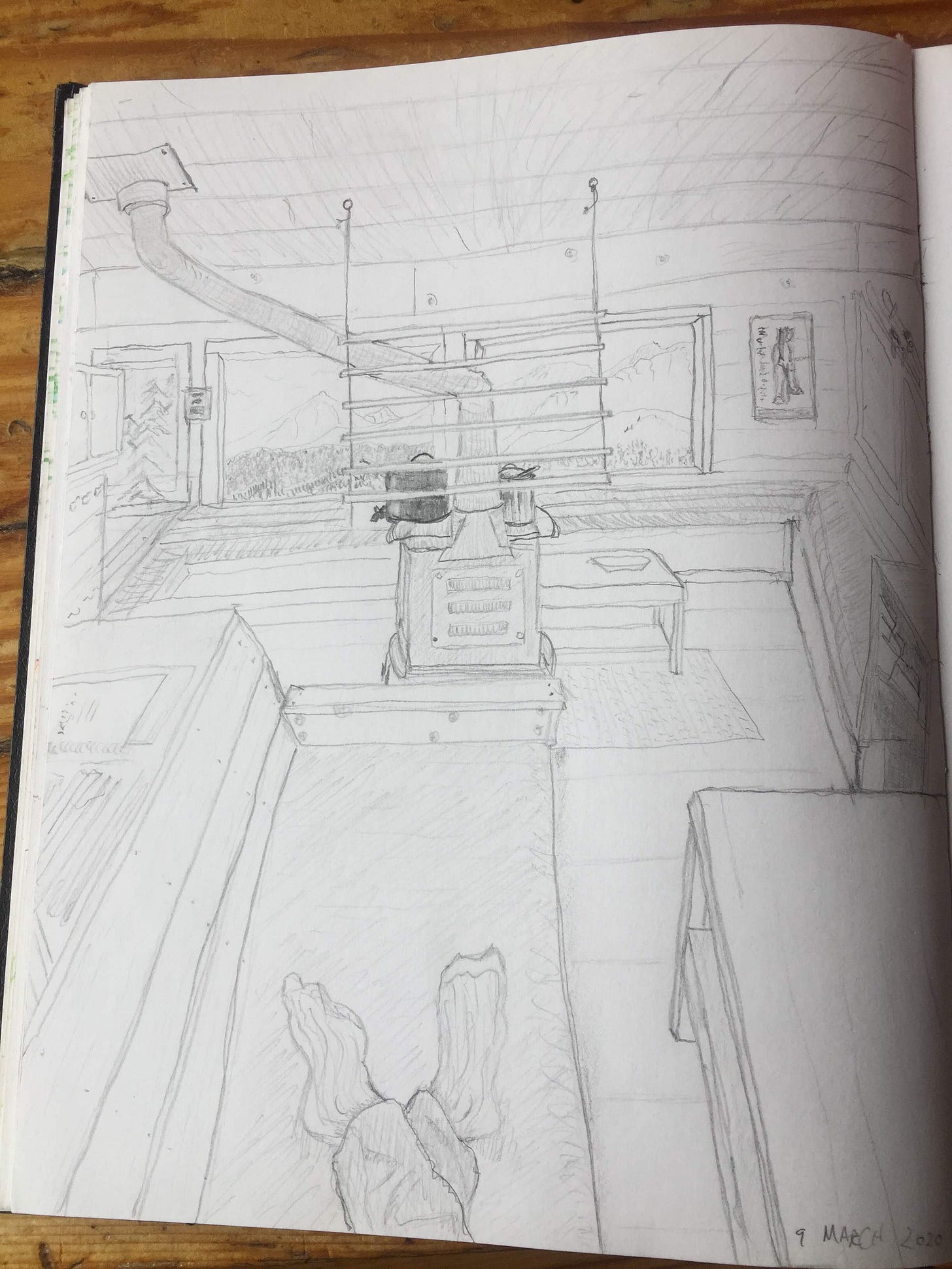
“To pay attention, this is our endless and proper work.” —Mary Oliver
Thank you for joining me here on the Road2Elsewhere. I hope you enjoy the ride.
Have a favorite “noticing” practice in your life? Do tell. We can’t all be sketchy, after all.



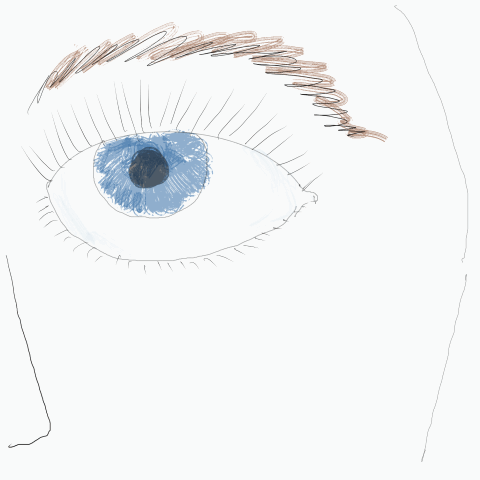
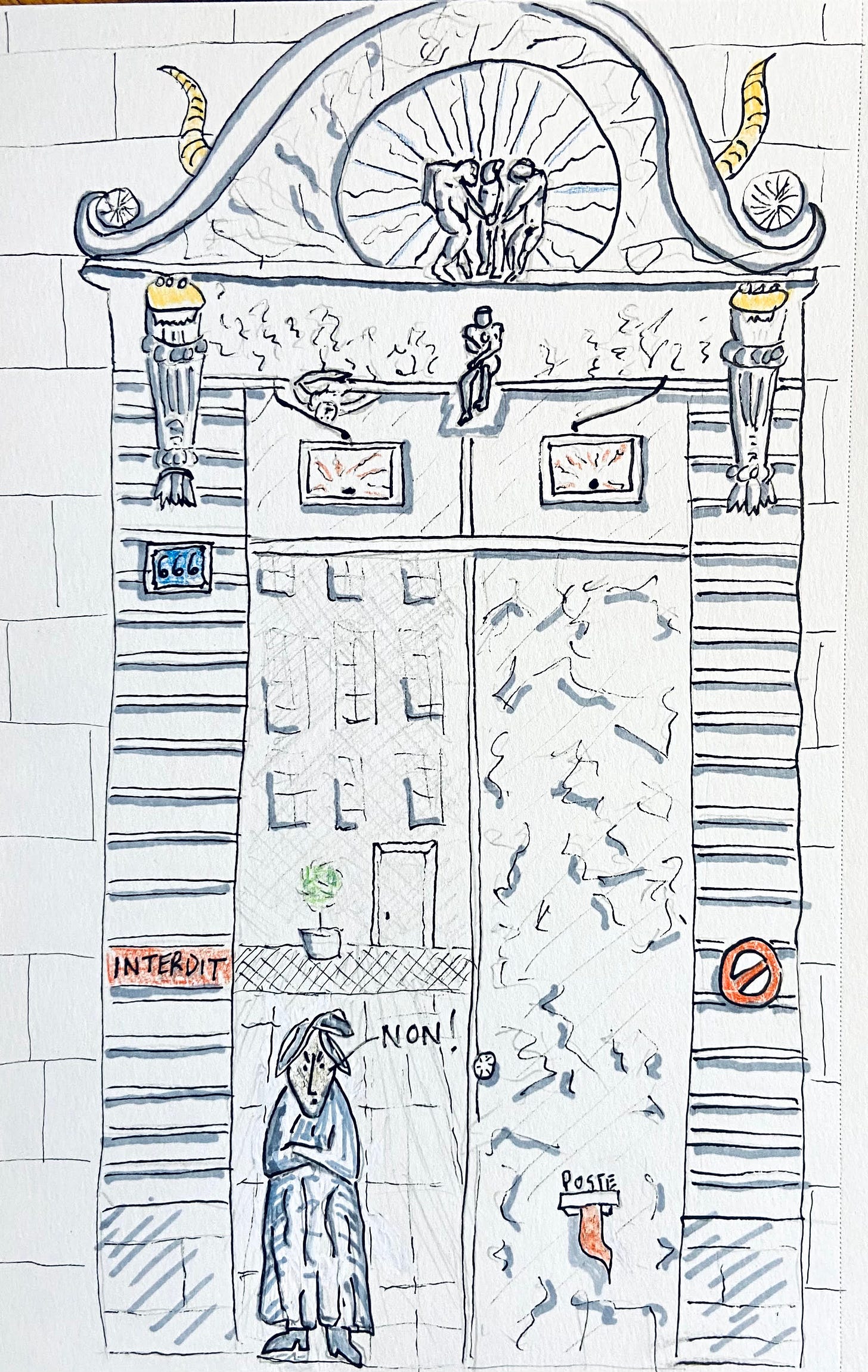
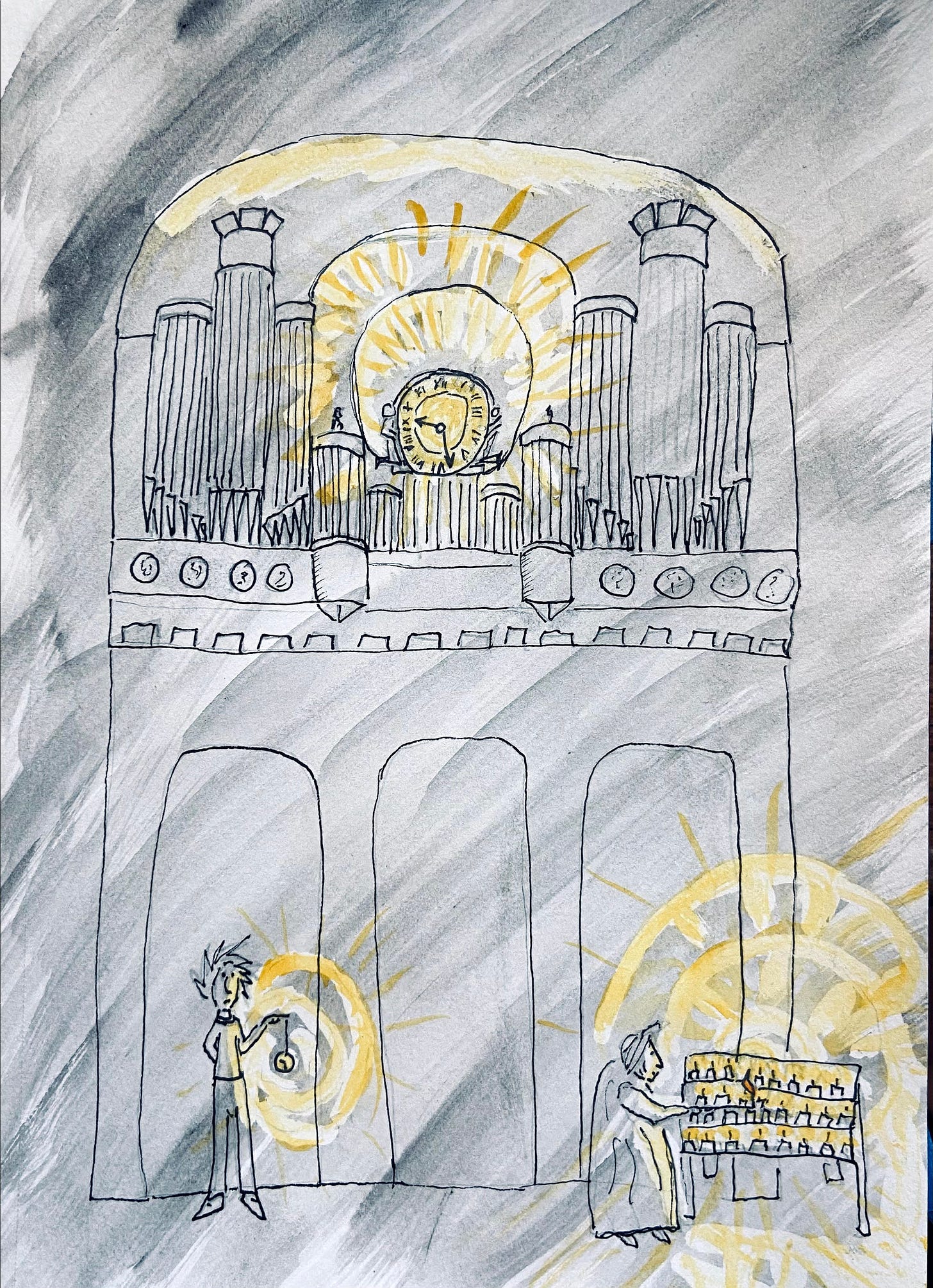
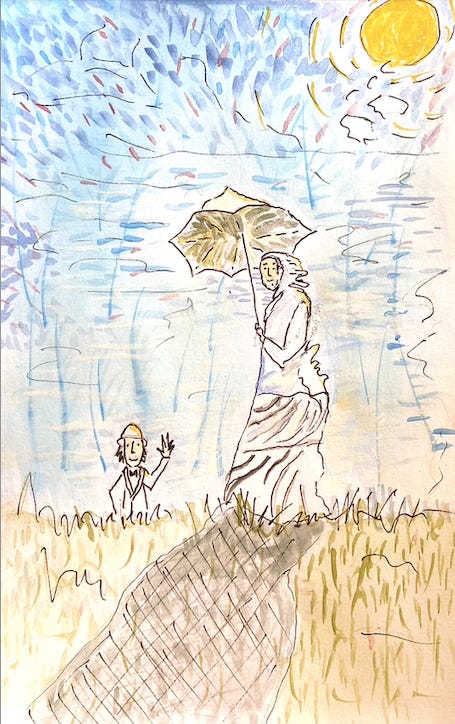


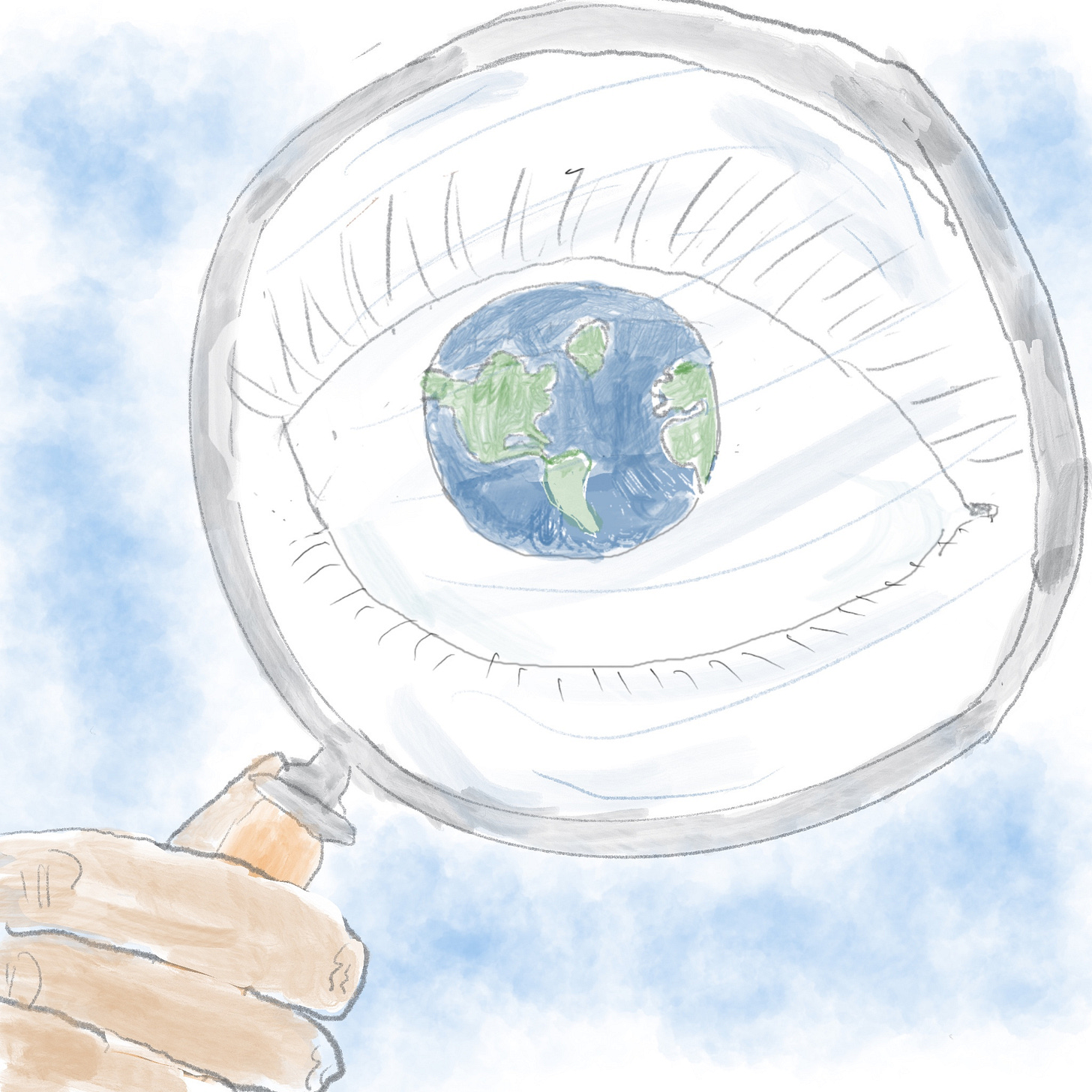
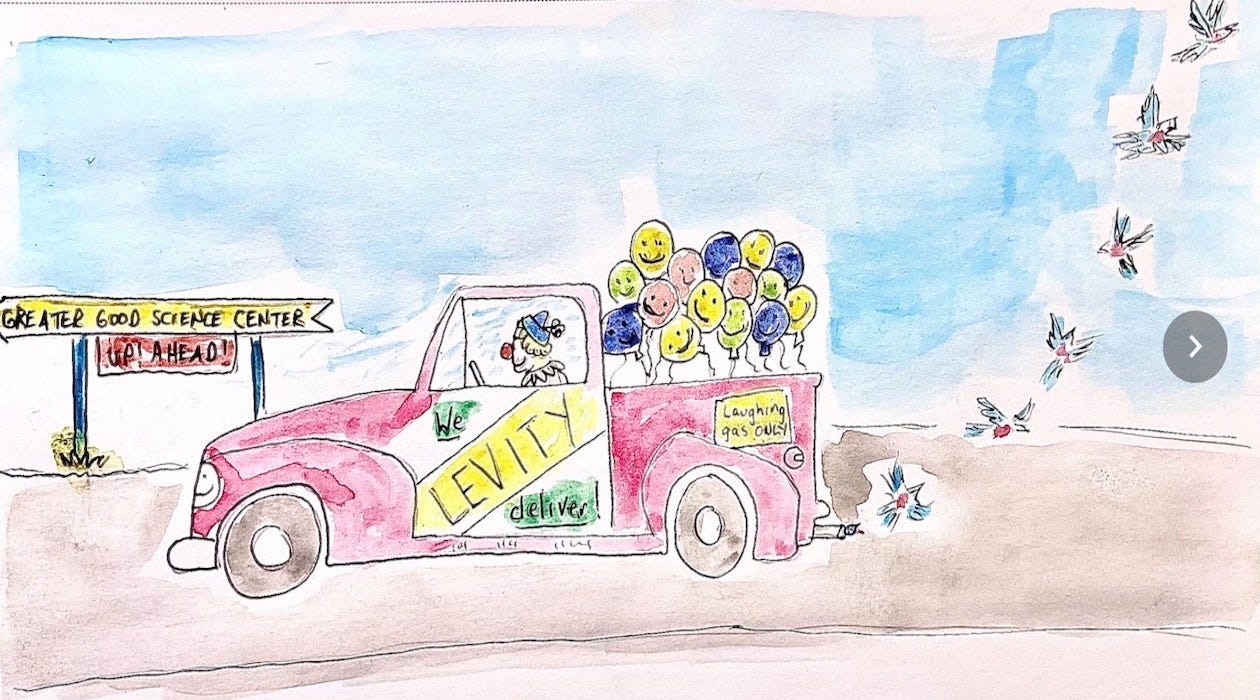
What I observe is what people wear. Not fashion, not style, just what they choose when they get up in the morning and put on their bodies. As a costume designer and author, your clothing is messaging, whether you know it or not. What are you wearing Peter? Hiking socks? What else?
Beautifully said, Peter! Love what you are doing with your journal entries.